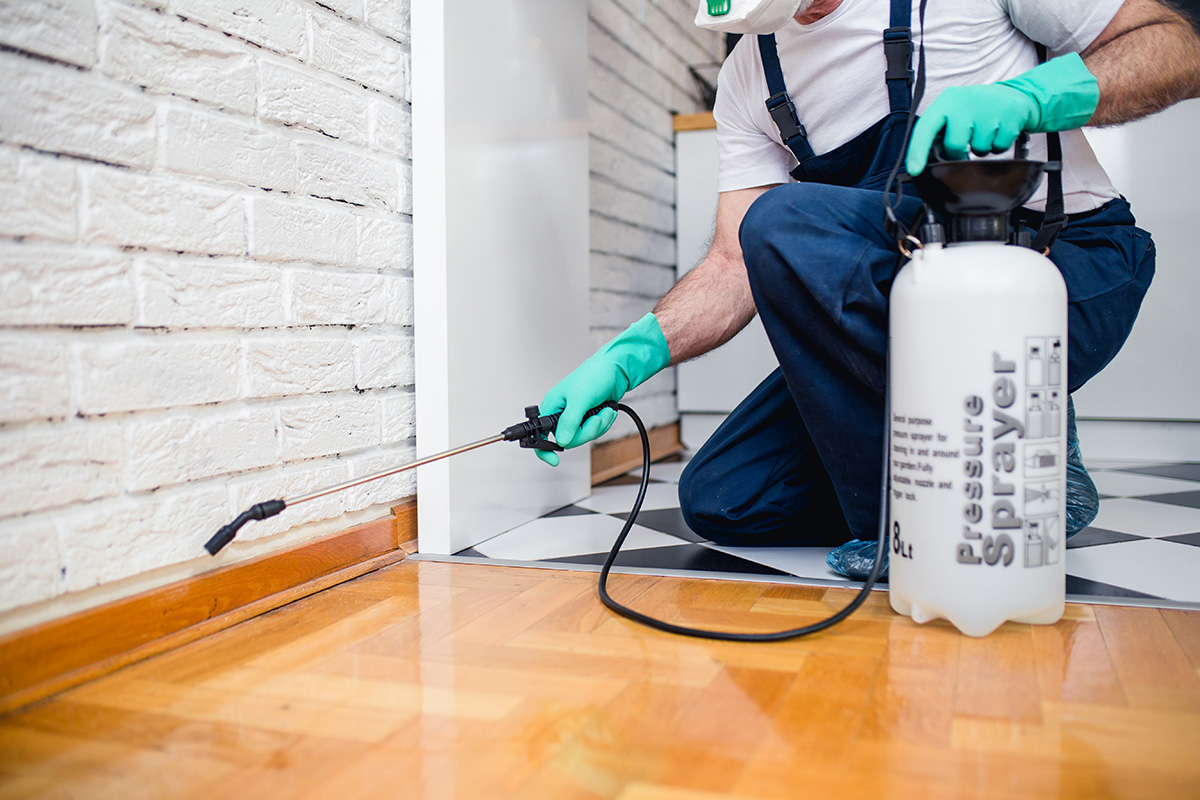Bed Pest Treatment Failure: Comparing Chemical Vs. Non-Chemical Solutions
In the world of pest control, especially when taking care of the relentless problem of bed bugs, the choice between chemical and non-chemical treatment services can be an essential one. Both strategies offer unique benefits and downsides, influencing variables such as performance, safety considerations, and general expense. By examining the nuanced details of each method, a clearer understanding of which course to seek in addressing a bed bug problem can be obtained.
Efficiency of Chemical Therapies
Chemical treatments for bed pest infestations have actually been extensively recognized for their quick and potent effectiveness in getting rid of these pests. When considering the effectiveness of chemical therapies, it is important to comprehend that they can provide a thorough and quick remedy to a bed pest trouble. Specialist pest control experts usually count on pesticides to target bed bugs at various phases of their life cycle, consisting of adults, nymphs, and eggs. These chemicals generally work by interrupting the bed bugs' nerve system, resulting in paralysis and eventual fatality.
In addition, chemical treatments have the advantage of offering recurring impacts, indicating that they can proceed to eliminate bed pests even after the first application. This residual activity is especially valuable in combating any type of potential re-infestations. Furthermore, the fast activity of chemical treatments can bring alleviation to people dealing with extreme bed bug invasions, enabling them to gain back control of their space promptly.
Safety Worries With Chemical Solutions
One important facet that calls for careful consideration when making use of chemical services for bed insect treatment is guaranteeing the safety of owners and the setting. While chemical treatments can be efficient in eliminating bed insects, they might present threats if not dealt with properly. One of the main safety worry about chemical options is the possible harm they can trigger to human health and wellness. Direct exposure to specific chemicals made use of in bed bug therapies can cause breathing problems, skin inflammation, or other negative responses, especially in individuals with pre-existing conditions or level of sensitivities. Additionally, improper application or dose of chemical pesticides can lead to toxic deposits remaining in the treated location, presenting long-term health threats to owners.
In addition, the environmental influence of chemical services is one more substantial consideration. Some pesticides made use of in bed bug treatments might be dangerous to advantageous pests, wildlife, and environments if they leach into the dirt or water systems. It is necessary to utilize chemical treatments deliberately, complying with safety guidelines, and taking into consideration less toxic alternatives to minimize these risks and make sure the reliable and safe monitoring of bed pest invasions.
Benefits of Non-Chemical Strategies
Taking into consideration the prospective security worries and environmental impact connected with chemical options for bed pest therapy, discovering non-chemical approaches presents an appealing option with numerous distinct benefits. Non-chemical methods use a much safer option for families, particularly those with kids, individuals, or pet dogs sensitive to severe chemicals. These strategies remove the risks of exposure to hazardous compounds, lowering the capacity for unfavorable health and wellness effects. Additionally, Continue non-chemical treatments are eco-friendly, as they do not add to air or water pollution, making them a lasting selection for parasite control.
Additionally, non-chemical remedies can be reliable in targeting bed bugs, including hard-to-reach locations where chemical therapies may not pass through. Methods such as warmth treatment, vacuuming, vapor cleaning, and cushion encasements supply detailed elimination without the use of hazardous chemicals. Moreover, non-chemical strategies can be much less turbulent, requiring marginal prep work and enabling quicker reentry right into treated locations. Overall, going with non-chemical bed pest therapy methods not just prioritizes security and environmental defense however additionally makes sure efficient and thorough insect control.
Limitations of Non-Chemical Treatments

Furthermore, non-chemical therapies typically require several applications to achieve effective obliteration. This can be lengthy and may not always ensure complete elimination of all bed pests and their eggs, particularly in surprise or hard-to-reach locations.
Moreover, the success of non-chemical therapies heavily counts on correct application and thoroughness, which can be testing for people without expert proficiency. Inadequate application of non-chemical approaches may result in incomplete removal, causing relentless problems and the need for additional treatments.
For that reason, while non-chemical therapies have their benefits, it is vital to acknowledge these limitations and consider them when identifying one of the most effective method for managing bed bug infestations.
Cost Comparison: Chemical Vs. Non-Chemical Options
Given the restrictions linked with non-chemical treatments, an important aspect to evaluate in the context of bed insect administration is the expense contrast in between chemical and non-chemical alternatives. In contrast, non-chemical treatments like warm treatment or heavy steam can be extra expensive, with prices ranging from $1,000 to $6,000 for a whole home. While the visit their website initial price of chemical therapies may appear lower, numerous therapies may be called for to fully remove the infestation, possibly boosting the general cost.
Final Thought

Thinking about the prospective safety problems and ecological effect associated with chemical options for bed pest treatment, exploring non-chemical methods offers an appealing choice with several unique benefits.Provided the constraints associated with non-chemical treatments, an important aspect to review in the context of bed insect administration is the price comparison in between chemical and non-chemical alternatives. In comparison, non-chemical therapies like warmth therapy or steam can be much more costly, with expenses ranging from $1,000 to $6,000 for a whole home. While the first price of chemical therapies might seem lower, numerous treatments might be required to fully remove the infestation, potentially boosting the overall price.In conclusion, when comparing chemical and non-chemical bed pest treatment alternatives, it is necessary to think about efficiency, security, advantages, limitations, and price.